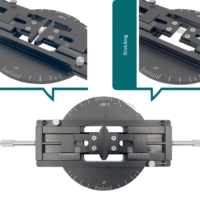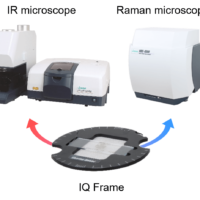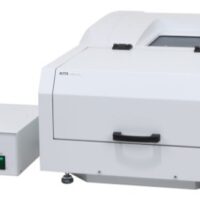Introduction
Some polymers used in plastics and fibers have the same molecular structure but different crystal structures. Physical properties such as hardness and melting point differ depending on the crystal structure, and they are used properly depending on the application. Therefore, it is very important to evaluate the crystal structure of polymer materials.
PVDF (Polyvinylidene Fluoride) is known as a polymer with many kinds of crystal structures. Due to its excellent mechanical strength and heat resistance, and good processability, it is used for semiconductors, solar panel covers, musical instrument strings, fishing lines, and so on. As a raw material for these general-purpose products, α-type and β-type (Fig. 1) are often used.

Fig. 1 Molecular structure of PVDF
We report the results of evaluating two types of PVDF fishing lines with different prices. These fishing lines have the following characteristics and their functions are greatly different. Since both materials are described as it is made by 100% fluorocarbon (PVDF), it is assumed that there is a difference in the crystallinity.
[Samples]
・Fishing line 1 Features: High specific gravity, Inexpensive
・Fishing line 2 Features: High specific gravity, Flexible, high binding strength, expensive
Experimental
Broadband measurement of fishing line surface
In the IR spectrum, it is known that the key band that characterizes the crystal appears in the low wavenumber region. We measured the surface of the fishing line by the ATR method using the following system that can measure a broadband of 6000-30 cm-1 at once without changing the optical elements.
With this system, the entire optical path in the FTIR main unit can be in a vacuum state, so that water vapor noise, which is a problem in the low wavenumber region, is eliminated and a good spectrum is obtained.
[Measurement system]
Model: FT/IR-6700FV
Light source: Ceramic light source
Beam splitter: Mid-Far IR Broadband beam splitter
Detector: DLATGS (Broadband) detector
Window: None (Opened by Gate Valve with Window Auto Changer)
Attachment: ATR PRO ONE Prizm: Diamond (Broadband type)
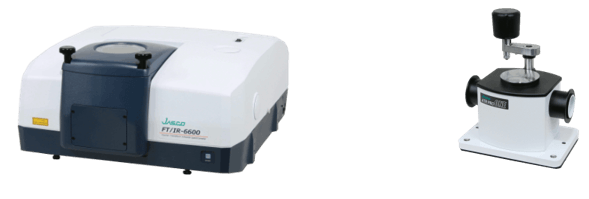
Fig. 2 FT/IR-6700FV and ATR PRO ONE
The resulting spectra are shown in Fig. 3. By removing water vapor noise by evacuation, it was able to clearly observe the weak peak in the low wavenumber region. Since α-type PVDF has a band at 763 cm-1 and β-type PVDF has a band at 840 cm-1(1), it was found that fishing line 1 is made from only β-type and fishing line 2 is a mixture of α-type and β-type.
It was also found that there is a difference in spectral shape between the α-type and β-type in the far-infrared region below 400 cm-1. Many polymers have many bands in the mid-infrared region above 400 cm-1. For this reason, in mixed resins in which multiple types of polymers are mixed, the bands of each component mostly overlap, making assignment difficult. By measuring up to the far-infrared region, it is possible to avoid overlapping bands.
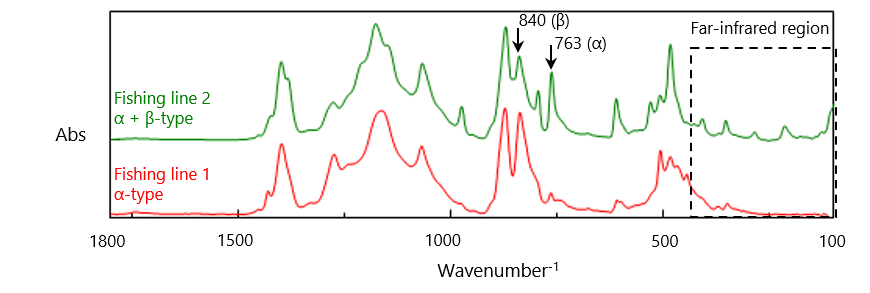
Fig. 3 IR spectra in the mid-infrared to far-infrared region of two types of fishing line surfaces
Evaluation of internal structure by IR imaging
Next, in order to evaluate the internal structure of the fishing line, a sample of a thin section of the fishing line pressed in a KBr plate was measured by imaging using the microscopic transmission method.
[Measurement conditions]
Model: FT/IR-4700 + IRT-5200
Detector: Mid band MCT detector
Spectral resolution: 4cm-1
Accumulation: 4 times
Aperture size: 20 x 20 µm
Measurement area: Approx. 600 x 600 µm
Fig. 4 shows the chemical image of each component obtained from the analysis. The α-type was drawn at a peak height of around 763 cm-1, and the β-type was drawn at a peak height of around 840 cm-1. While fishing line 1 is entirely composed of β-type, it was clarified fishing line 2 has a β-type in center, and a structure in which a mixed resin of α-type and β-type is coated on the outer circumference of about 50 µm.
The expensive fishing line 2 could be thought to improve durability by separating the structure between the outer periphery and the inner part so that the entire line will not break even if the outer periphery is damaged.
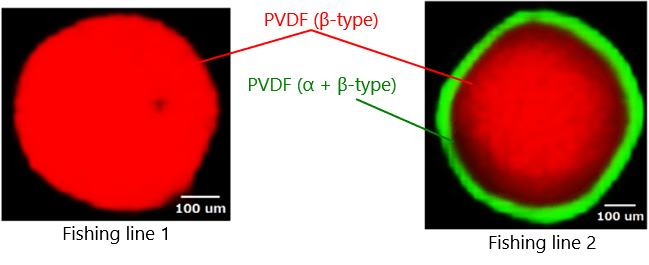
Fig. 4 Chemical image of two types of fishing line (peak height)
Conclusion
We reported a case where the crystallinity of a polymer material was evaluated from various perspectives from surface analysis by broadband ATR measurement and internal analysis by IR imaging. By using FTIR, we believe that it can be used in various situations related to the production of polymer materials, from material development to quality control.
References
(1) Xiaomei, C.; Tingping, L.; Daoheng, S.; Liwei, L. RSC Adv., 2017, 7, 15382-15389

